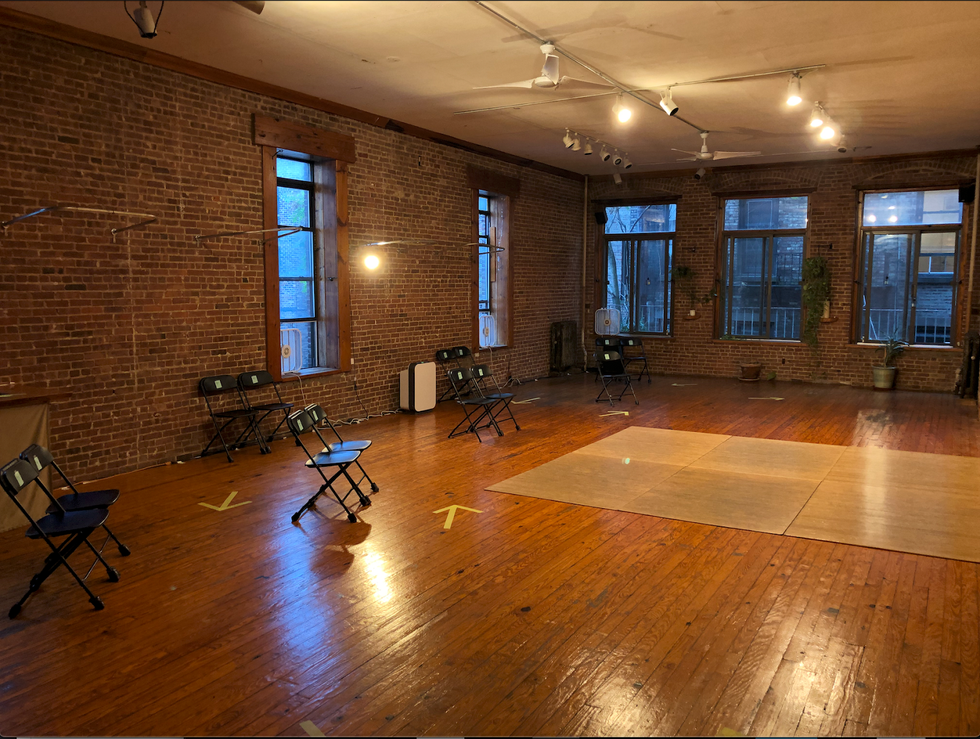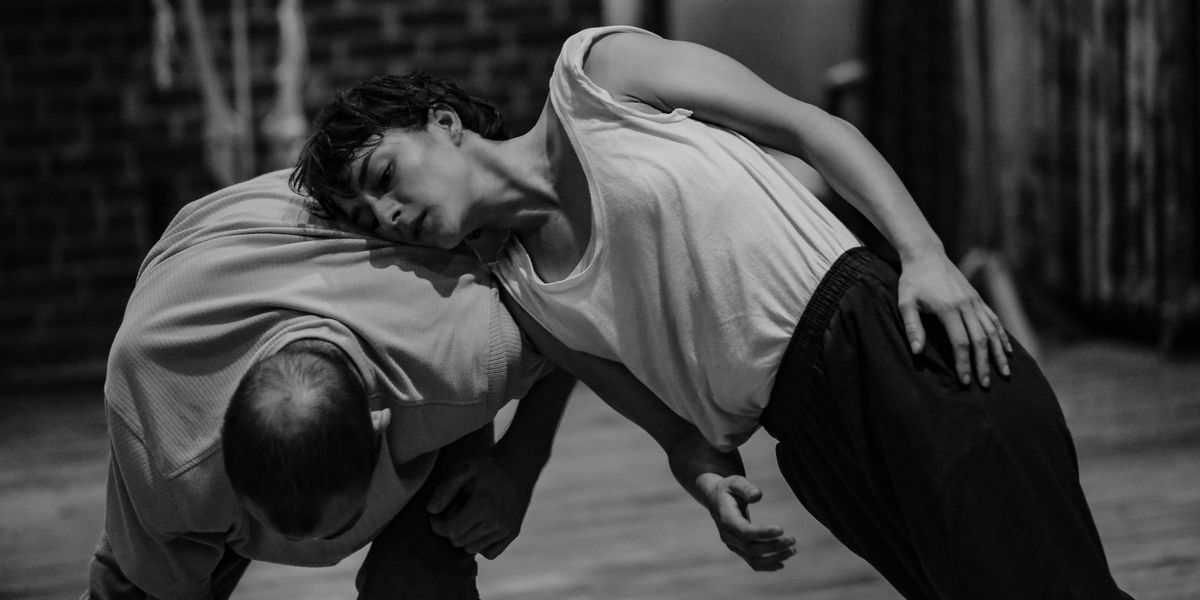What It Felt Like to Attend an In-Person Performance for the First Time in a Year
On a rainy night in February, I find myself exchanging my well-worn sweatpants for a flashy dress that’s been collecting dust in my closet for months. I step out of my Upper West Side apartment and take the subway (something I do so rarely these days that I find myself getting turned around twice over) downtown to see ARTS ALIVE, a real, in-person performance series.
It’s the first live performance I’ve attended in exactly one year—Keone and Mari Madrid’s Beyond Babel, on February 28, 2020, was my final hurrah before entering the COVID-19 abyss.
As I walk up to the Arts On Site space, I realize just how different this performance experience will be. Rather than exchanging my ticket with a chatty usher and dragging my husband through a sea of dance lovers to sit shoulder to shoulder in a sweaty, cramped theater, I wait alone in a hallway for a masked staffer to take my temperature. I dutifully follow instructions and slather hand sanitizer on before reaching into the “sanitized pens” cup and signing a waiver which states that I have not had COVID-19 symptoms or a positive test, nor have I been in close contact with a confirmed or suspected case in the past 14 days.
I adjust the straps of my two masks, feeling the ache behind my ears, before making my way to the large, open studio space. There, with six feet between each party, 16 chairs are set in a semicircle. I find the one with my name and sit down, studying the large windows and fans that should provide proper ventilation.
“We have thoroughly reviewed all COVID-19 restrictions involving indoor live performances [including a call with an official from the governor’s office] and come to the conclusion that we are offering low-risk indoor art events that are currently approved in NYC,” the website says. “We will be following all required protocols for low-risk indoor art events to ensure the safety of our guests and performing artists.”
 Arts On Site
Arts On Site
Jessica Smith, Courtesy Rigney
Like every experience outside of my apartment over the past 12 months, a feeling of anxiety is haunting me. Still, I’m thrilled to be there, watching the magic of dance in the flesh.
The 15 other audience members clearly feel the same—the energy in the room is so abuzz, it may as well be 150.
The dancing begins with dancer/choreographer Peter Farrow performing a delightful solo work titled Nearly, which uses mime, shape, technique and physicality to swing between moments of humor and drama.
Then choreographer Annie Rigney presents Galithea, danced by Georgia Usborne (Gallim Dance) and Jason Reese Cianciulli (Vim Vigor and Sleep No More). The work explores an ecological phenomenon known as the “edge effect,” where two distinct habitats meet, producing a third, unique ecosystem. The concept is explored through the meeting of the dancers’ bodies in space. At a time when physical touch is so often off-limits, the intertwined figures slithering through space to connect with one another is as mesmerizing as their unexpected, daredevil lifts.
The juxtaposition of both sound and visualizations in this live performance versus the many I’ve watched online this year is striking. The dirty soles of the dancers’ feet brushing against the floor; the creaking of the wood under their weight; the smack, roll and swish of movement in space are all elements I’ve missed.
Still, no sound is more prevalent than the dancers’ lungs heaving air through the pieces of cloth covering their faces.
“Dancing with masks in the beginning was a challenge,” Rigney says in a phone interview after the show. “It took another level of stamina.”
I spend a lot of the performance wondering.
How long will it be until we no longer have to wear masks to be safe?
How did they stay in such great shape during lockdown? (The lifts and jumps were so physical, I was getting tired just watching.)
Was this piece created over Zoom? (The answer: No, Galithea was originally conceived at the Arts On Site Residency and Retreat Center in New Paltz, New York, last summer, and finished this winter at the Arts On Site NYC location under strict COVID rules.)
Was COVID-19 testing a regular occurrence for this to be possible? (Yes. Rigney says the dancers were tested often, and created a pod.)
Do the dancers feel safe? “We made the choice, once we began working together, that we would be sharing germs,” Rigney says. “So, there had to be a fair amount of trust between us. We have minimal contact with others.” According to Rigney, the Arts On Site space holds eight studios, allowing the dancers to be isolated. Rigney would unlock the space herself, to avoid contact with those outside her pod, and leave without ever bumping into anyone.
And for a completely devastated industry, how are performances with only 16 audience members financially possible?
According to Arts On Site executive director Chelsea Ainsworth, the organization has lost 70 percent of its yearly revenue due to COVID-19. To compensate, it’s turned to a model that offers artists studio space and/or minimal compensation in exchange for these performances. Arts Alive artists like Rigney have the option of free residency space or a portion of the ticket sales.
“This past year has been about surviving as an arts organization, providing what we can afford, so that we can come back from the pandemic and continue to offer space and opportunities to artists who may not have had that opportunity otherwise,” Ainsworth says.
As the performance ends and the dancers take their bows, their expressions are ones of absolute elation. It was a fleeting evening (just 45 minutes in total), but I too feel something I haven’t experienced in a very long time—a kind of connection that only live art can bring.




